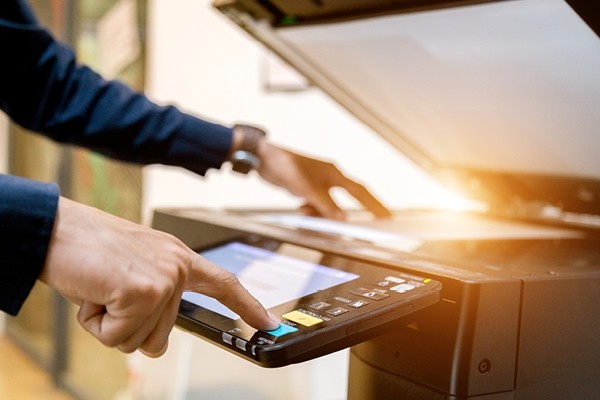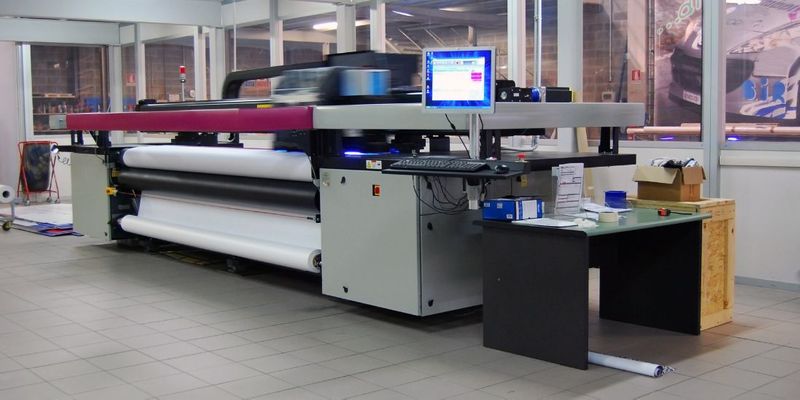Some Of 24??media
Some Of 24??media
Blog Article
5 Simple Techniques For 24??media
Table of ContentsGet This Report about 24??media24??media for DummiesThe Main Principles Of 24??media The smart Trick of 24??media That Nobody is Talking AboutThe Greatest Guide To 24??mediaIndicators on 24??media You Should Know
This is only feasible with Digital Printing, and it results in a brand-new level of personalization. Litho Lamination (Offset Printing) is a typical printing technique and was the most popular option up until recently. Litho is the process of printing onto a paper liner board, and after that laminating flooring that onto corrugated.Right here are a few of the most noteworthy ones: Despite the fact that various other printing types, like offset and screen, can generate excellent high quality, digital printing provides outstanding results. Unlike some other techniques, the high quality of a very first item coincides as the last. The digital printing process involves a direct transfer of the ink to the substratethat's why it's much quicker than other printing options.

Digital printing is extremely cost-effective. A printing equipment and ink or printer toner, various other tools isn't required. The cost may vary relying on the ink quality, maker intricacy, and type of substratum. Nonetheless, compared to other approaches, electronic printing is usually more economical. When it concerns customising a print job's end product, electronic printing is rapid and flexible.
The Definitive Guide to 24??media
That's why digital printing is a recommended method for unstable printing jobs. Digital printing entails pressing a couple of buttons and obtaining an outcome within seconds. It does not call for any special abilities or expertise to obtain the task donethe procedure is completely automated. Digital inkjet printing cuts the amount of waste due to the fact that it just sends ink to the components to be published.
While digital printing is very beneficial, other methods are still in usage. Among them is offset printing. Countered printing (or countered presses) is a traditional printing technique. It makes use of printing plates, rubber coverings, and ink. Aluminium plates transfer an image onto a rubber blanket, which consequently surrender a sheet of paper, leaving a print.

Our 24??media Diaries
Screen printing doesn't apply pressure to the product. That's why it's often used for printing on fragile substrates like balloons or slim materials. Digital Printing. An even more vivid, saturated, and bright finishBetter colour matching capabilitiesCost-efficient for large sets Made complex and taxing setupHigh prices for low-volume printingOnly one style per batchResolution of pictures is typically lower top quality
The printer sprays countless tiny ink droplets externally to develop the desired picture. Today, business inkjet printer innovation is replacing standard high-speed printing presses.: Laser printers use a laser to transfer the digital picture to the surface. The laser returns and forth to develop static power throughout the printing process, launching the warmed printer toner onto the surface.
Laser printers are quicker yet often featured greater upfront expenses. Nonetheless, laser printers often tend to have a higher long-term ROI than inkjet printers. Digital printing is progressing quickly. Thanks to its speed, cost-efficiency, and top quality, it's likely to provide older printing innovations ineffective in the near future. By maximizing electronic printing capacities, you can create top notch products and advertising and marketing materials while maintaining the track record of a state-of-the-art company.
When planning for your organization's operational or marketing print product, it is very important to pick the most reliable kind of printing approach. This can assist save time and cash. There are lots of factors that enter into making a decision whether a task Learn More Here should make use of electronic or offset presses. Variables that enter into deciding the print process a project demands will be described in this short article.
Getting My 24??media To Work
This printing procedure is generally made use of for smaller jobs with a fast turn-around time. Countered printing is the process where the photo is moved from a metal printing plate to a rubber blanket, and afterwards to the paper to produce a top quality, clear picture. Offset printing is utilized for larger jobs that require specific colour representation.
Although estimates can vary based upon a project's demands, a handy overview to making a decision which printing procedure your job needs is to compute run size. If your project requires much less than 1,000 copies, it may be best to publish using electronic presses. If the project calls for even more than 1,000 duplicates printed, it might be a lot more inexpensive to use countered printing.
Digital printing has a low set-up expense and a high run-cost, suggesting it is the perfect printing method for shorter runs. The factor that digital printing has a low set up expense is due to the fact that plates do not need to be made and examples do not have to be published. The toner that electronic presses use is expensive, which is the reason why it has a higher run-cost.
Balanced out presses are created projects with futures given that they have a high set up price and a low run-cost. The reason that offset printing has a high set up expense is due to the fact that journalism calls for big steel plates to be made in order to move the photo. It has an extensive cleaning and upkeep process that needs to be done in between various projects.
The 15-Second Trick For 24??media

Examples of countered printing tasks generated at Printing Unlimited. Throughout the printing process electronic presses, like laser printers, use toner for the production of colour.
Factors of personalisation can include a message, photos or colours that relate to the client's passion. There is a large variety of substratums that can be used when publishing electronically on a flatbed press. Window Vinyl. Utilizing our digital printers, we have the ability to print on nearly any substratum as much as 2 inches thick
Discover Phillip Akhzar's journey, the Founder and CEO of Arka, bringing 16 years of knowledge in packaging and supply chain logistics. Find out more on Arka. Display printing a long-lasting traditional print strategy, has actually weathered the progressing print landscape over time; this approach entails moving ink via a mesh display onto a surface area, yielding vivid and long lasting prints.
In spite of its advantages, display printing has limitations. One drawback is the complexity and cost of establishing initial screens. For small jobs, setup expenses can be reasonably high, making it less economical than alternate methods. Reproducing elaborate information postures a challenge. While excelling in bold styles, screen printing might have problem with great details and intricate patterns, a consideration for jobs demanding high complexity.
Get This Report on 24??media
Quick Turn-around: Since electronic printing is fairly quicker contrasted to the standard approaches, no time will be occupied by display prep work, as a result, making it appropriate for the completion of time-bound jobs that might need amendments in the nick of time. Flexibility in Products: Utilizing electronic printing, one can publish on materials like paper, textile, plastic, and numerous others.
Restricted Color-Matching: When it come to color, electronic printing can not precisely replicate the colors utilized much like in traditional screen printing. This limitation will certainly impact job needing a best match with the colors utilized in the display printing procedure. Long-Term Sturdiness: Having the ability to print in a manner that is both vivid and comprehensive, one could argue that the lasting toughness of these prints on specific materials can be suspicious, with lots of events having liked screen printing for its even more robust, lasting outcome.
Report this page